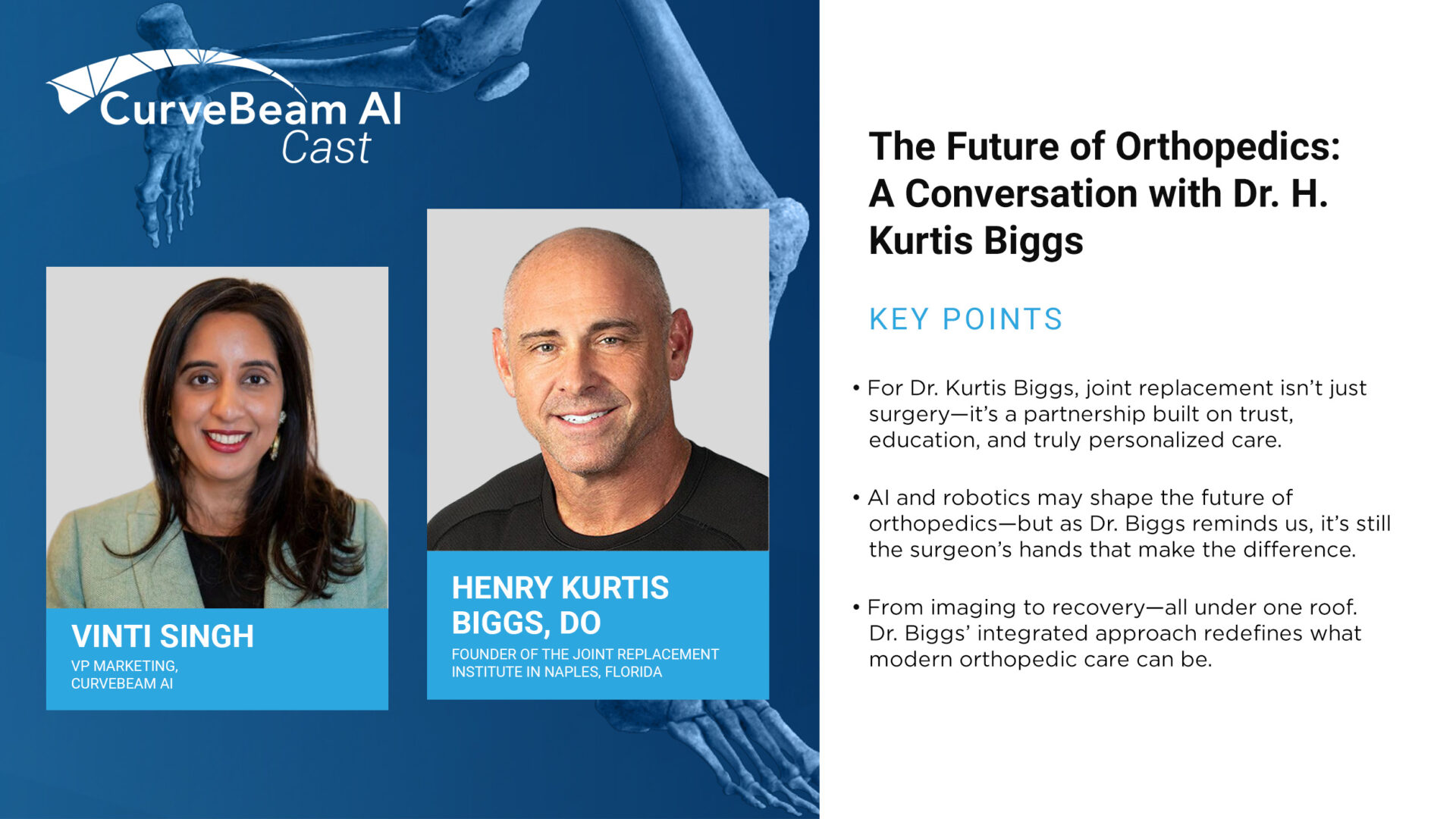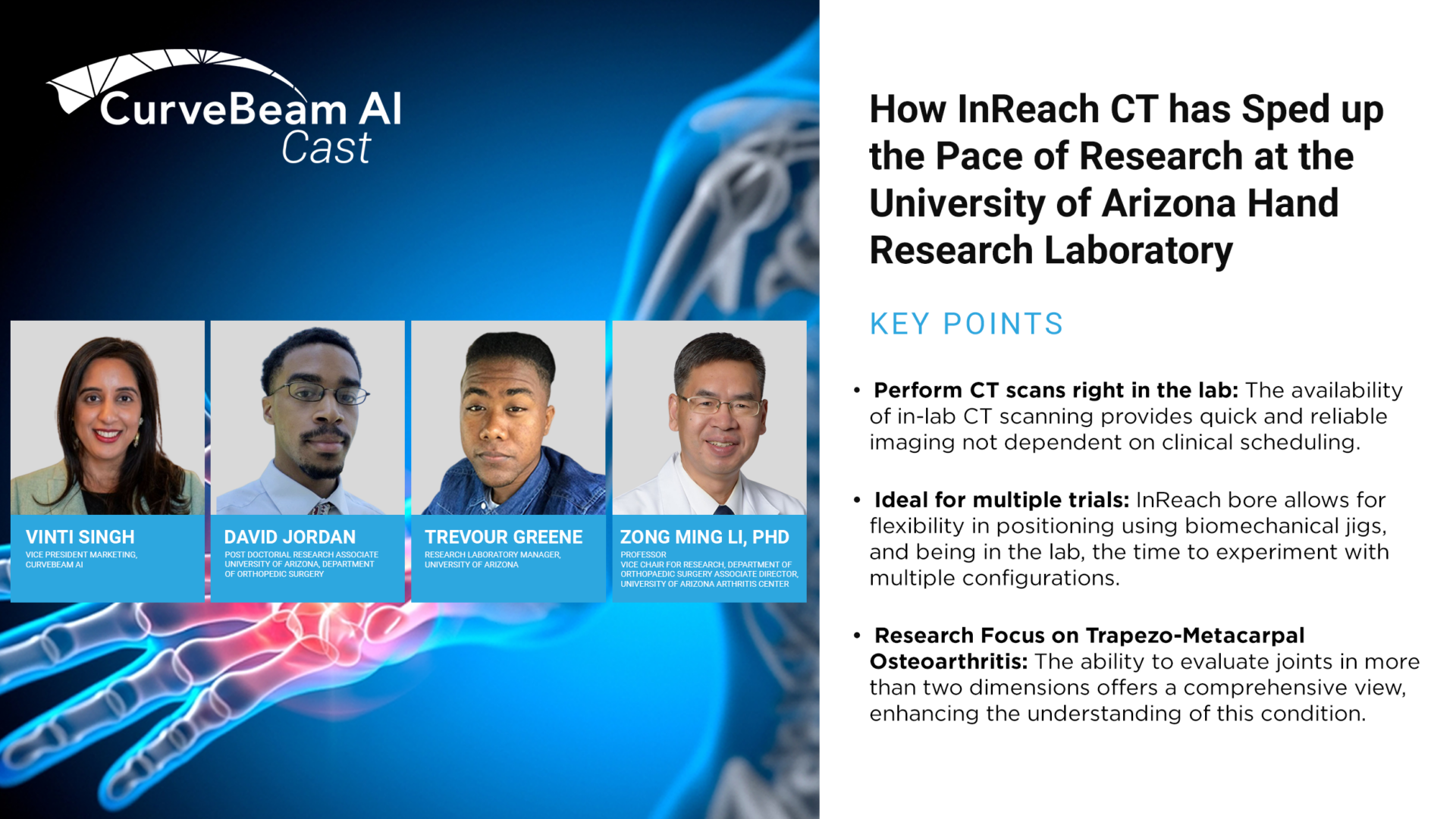The integration of cone beam CT imaging in research labs is revolutionizing orthopedic investigations. Dr…

Imaging, Innovation, and Independence: A Conversation with Dr. H. Kurtis Biggs
In a recent episode of CurveBeam AI Connect, Vice President of Marketing Vinti Singh spoke with Dr. H. Kurtis Biggs, founder of the Joint Replacement Institute in Naples, FL. A board-certified orthopedic surgeon, Dr. Biggs performs more than 900 joint replacements each year and has completed over 6,000 anterior hip replacements. Their discussion spanned robotics, AI, imaging, and the evolving challenges of maintaining private orthopedic practice.
Balancing Innovation and Application
Dr. Biggs noted that while AI and robotic systems hold great potential, clinical adoption requires patience and precision. “AI is going to be fantastic on the diagnostic spectrum,” he said, explaining that data and decision support tools will likely transform research and workflow before they change the surgical field itself. Robotic assistance, he added, “is a great set of instruments that the surgeon individually can select to use,” though the surgeon remains central to the procedure.
Preventative Care and the Surgeon’s Role
The conversation turned to osteoporosis and fracture prevention—areas where orthopedic surgeons can have a greater impact. Dr. Biggs described a shift from a “see something, send them away” mentality to a “see something, do something” mindset, encouraging orthopedic teams to identify risk factors early and guide patients toward preventive care through exercise, supplements, and monitoring.
Building a Comprehensive Practice
At the Joint Replacement Institute, comprehensive care—including imaging, physical therapy, and pain management—is available under one roof. “One-stop shop really means a lot for patients,” Dr. Biggs said, describing how integrated services improve convenience and continuity of care.
His team currently utilizes MRI, C-arm, mini C-arm, and ultrasound imaging. Looking ahead, he sees weight bearing CT (WBCT) as a natural next step, given its role in robotic data acquisition and personalized surgical planning. Dr. Biggs also highlighted the business considerations of imaging integration, noting that ancillary services support both patient satisfaction and private-practice sustainability.
Imaging and the Future of Orthopedics
When asked about the potential of WBCT, Dr. Biggs pointed to its relevance across multiple specialties. He discussed how this technology could support evaluation in spine care—helping inform decisions on stabilization or decompression—as well as in hip and knee planning for optimizing implant placement and fit.
A Measured Path Forward
Throughout the conversation, Dr. Biggs emphasized a “slow and steady” approach to adopting new tools and technologies. For him, imaging remains central—not only for clinical precision but also as a cornerstone of connected, autonomous orthopedic practice.




